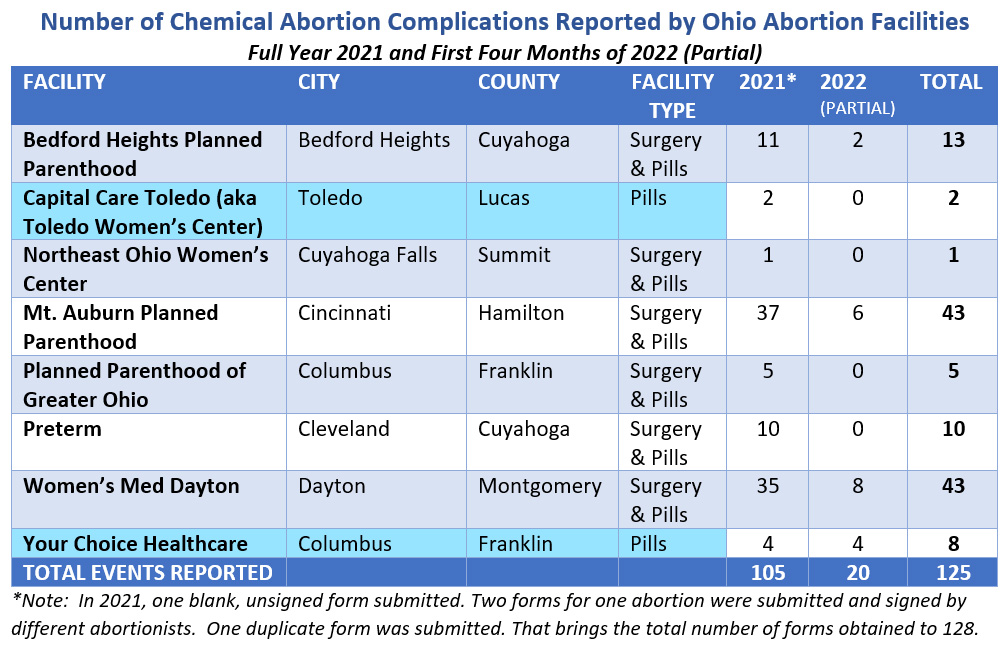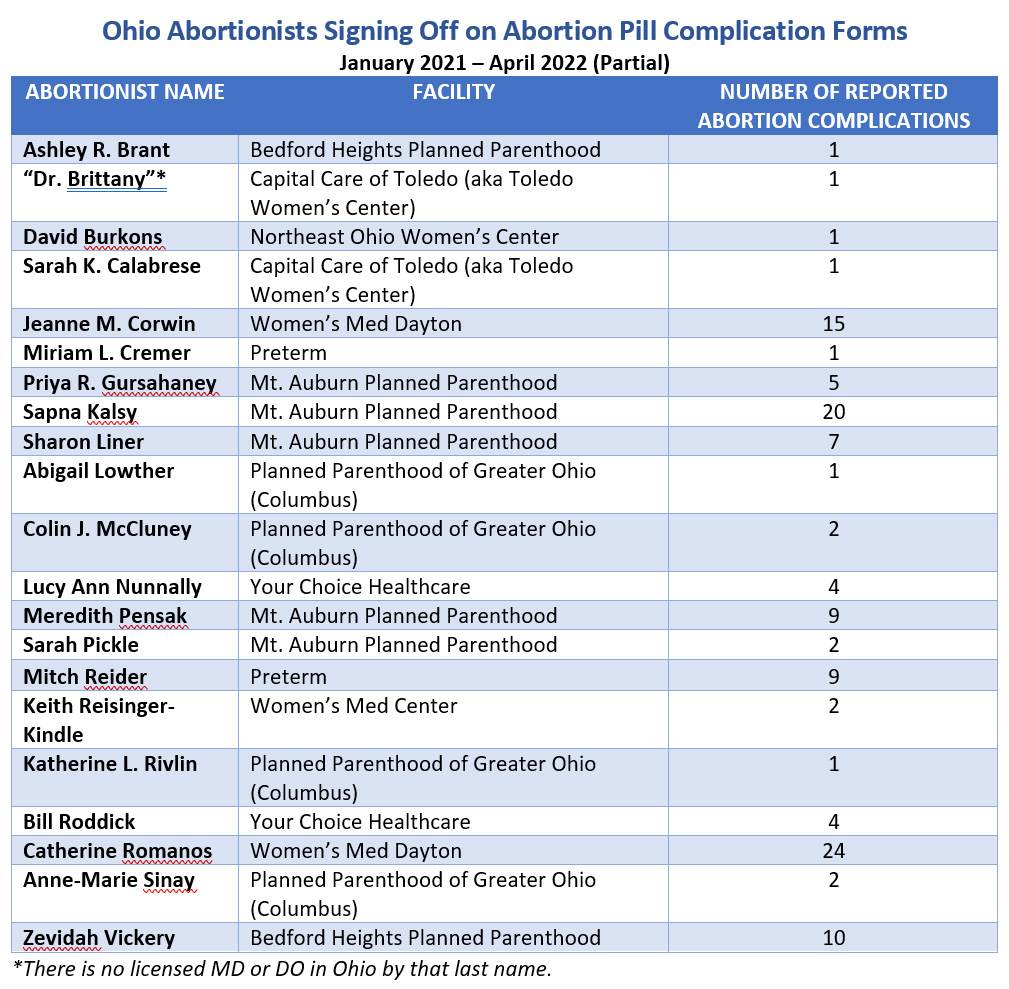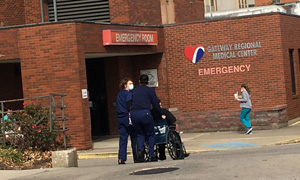By Cheryl Sullenger
Columbus, OH — In the wake of the leaked opinion in the Dobbs v. Jackson Women’s Health Organization case that indicated the Supreme Court is ready to overturn Roe v. Wade, the news has been rife with reports of the planned expansion of abortion pill usage throughout the United States.
Planned Parenthood and other abortion businesses are scrambling to assure the public that the chemical abortion cocktail comprised of Mifepristone (formerly known as RU-486) and Misoprostol, is perfectly “safe,” even without the oversight of a licensed physician.
However, Operation Rescue has obtained 128 “Report of RU-486 Event” forms submitted to the State Medical Board of Ohio by abortion facilities statewide that soundly refute the abortion promoters’ claims of safety.
The documents detail complications from chemical abortions that were reported by all eight Ohio abortion facilities from January 2021 through April 2022.
Below is a table that shows the names of each facility and the number of complication reports submitted to the Ohio Medical Board during that time frame.

As of this writing Ohio has yet to release its 2021 abortion statistics, so there is currently no information available about the total number of chemical abortions done that year.
Possible underreporting
The the number of chemical abortion complications reported during this time frame likely do not reflect the true number of abortion pill complications for several reasons.
Ohio abortion facilities sometimes take months after the complications to submit the adverse event forms. It is probable that more reports will roll in during the coming months.
It is also possible that some abortion complications were handled privately by women who may have sought medical help from their own physicians.
There is some evidence that complications to chemical abortions are being underreported. Last year, Operation Rescue filed a complaint against the Bedford Heights Planned Parenthood for suspected underreporting. The high-volume abortion facility conducted chemical abortions in 2019-2020, but did not report a single complication, even though in previous years, it filed one of the highest numbers of complication reports. After the complaint was submitted, the facility was not disciplined, but it did resumed reporting.
Serious complications
The complications reported in the recently release documents were serious in nature and included five hospitalizations of women, all of which received blood transfusions after hemorrhaging.
Incomplete abortions accounted for 65 percent (81) of all reported complications. These involved retained tissue that may have included a deceased baby. These women experienced pain, cramps, and bleeding. Most of these cases were treated with a suction aspiration or a D&C procedure. Only three women were given a second dose of abortion drugs to complete their abortions.
Failed abortions accounted for 25 percent (31) of all reported chemical abortion complications. A failed abortion is one in which the baby in the womb survives the abortion attempt and continues to grow. Most women who experienced failed chemical abortions followed up with surgical abortion procedures.
Two women who experienced failed abortions had babies that survived into the second trimester of pregnancy. Sadly, both women opted to use the risky Dilation and Evacuation (D&E) dismemberment abortion procedure to end the lives of their babies.

Women opt to continue pregnancies
Three women whose babies survived chemical abortion attempts decided to continue their pregnancies instead of following through with surgical abortions that clinic abortionists recommended.
In one case, a woman received the abortion pills, but discovered she was still pregnant. She was given a second round of abortion pills, but those also failed to abort her child. After that, the woman had apparently had enough, and thankfully decided to keep her baby.
20 abortionists
There were twenty Ohio abortionists who signed off on the “Report of RU-486 Event” forms. The abortionist responsible for the most complication reports was Catherine Romanos, who works at Women’s Med Dayton, an abortion facility owned by late-term abortionist Martin Haskell. Haskell is known nationally for his claim that he invented the now-banned Partial Birth Abortion procedure.
One form was signed by someone going by the name of “Dr. Brittany.” However there is no licensed Medical Doctor or Doctor of Osteopathy registered in Ohio that uses that last name. Operation Rescue has requested an investigation into this mystery person to determine whether laws have been broken.

Almost 8 per month
In all, Ohio abortion facilities averaged nearly eight significant complications to abortion drugs each month that required additional medical intervention, including second or even third abortion attempts.
Troy Newman, President of Operation Rescue commented on the findings. “When the abortionists claim abortion pills are safe, remember these 125 women who had to endure unwanted surgical intervention, emergency room visits, blood transfusions, and hospitalization. When that many women in one state suffer complications that require this level of intervention in just sixteen months, there is no way one can call abortion pills ‘safe.’ Efforts by the Abortion Cartel to liberalize access to these drugs is dangerous and should be opposed.”






